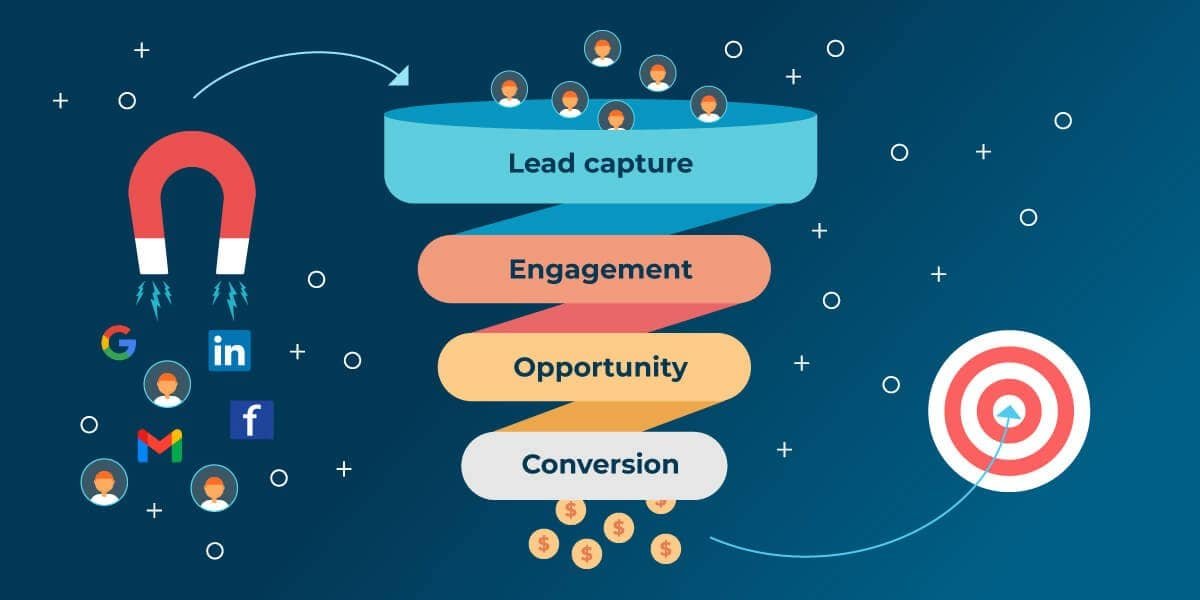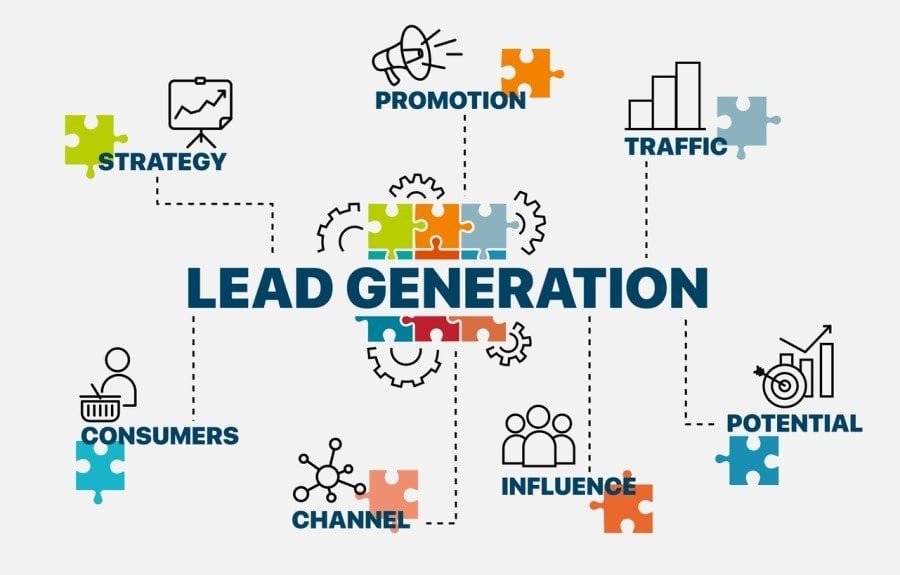So glad to have you here! If you had a magnet as powerful as that, one able to draw a crowd as well as turn casual passersby into zealous devotees, you’d make for a seriously strong connectivity signal, ey? Exactly. The optimisation of lead generation comes with its own secret sauce for success, and channelling customers through your news feed requires expert attunement—not ideal for the time-poor, target-trembling entrepreneur.
In these dynamic times when speed is of the essence for rapid response in the marketplace, sloppy ringlets and outdated slogans make critical connections nearly impossible, if not downright tricky. To respond competitively, meeting demands with your value proposition, every marketer, designer, webmaster and CEO ought to scream ‘Eureka!’ at the very notion. Of all the dynamic channels surfacing these days for monetising seconds and slicing money in micro-moments, few could be more cutting edge than SEO, which, coupled with the omnipresent power of Google, delivers traffic, yes, but, most vitally, expertly harnesses cutting-edge technologies calibrated to acquire and convert leads like never before. Without both halves of this razor-sharp value proposition, the competitive business in question relinquishes that precious conversion to the rival traffic-grab.
Welcome to yet another in-depth SEO lead generation optimisation post, but with a twist: instead of going at it the ‘call-to-action and keyword optimisation-driven’ way, we’re going to be looking at lead generation at its core. You see, there’s much more to SEO lead generation than meets the eye. There are several tools and strategies you can leverage to find and turn your prospects into warm leads. The dark side of lead generation is that once you learn it, you’ll never look at it the same way again. Get Ready for that light-bulb moment.
In this post, we’ll try and follow a logical pathway, as it were, by firstly looking at the core ‘nature of lead generation’ and how the overarching SEO rules apply to it, then distilling this abstract theory into practical actionable tactics. And after all, that’s what SEO is for. It’s one thing to have all the data in the world at your fingertips, but that’s worthless if you can’t turn all that raw data into actionable insights.
By the end of this post, you will be able to better understand how to use SEO to actually drive relevant, qualified prospects to your site and turn clicks into committed customers over time.
The proverbial life of any small business owner is a daily grind. You’ve got to contend with the ‘networking side’ of running a business. Spending hours at networking events every week hoping that one of the many people you meet is going to end up giving your business a boost, whether in terms of fresh clients, contract bids or even investments.

Understanding the Fundamentals of Lead Generation
Would you like to learn about the best SEO tools for generating leads? But before getting into the tools, let us discuss what lead generation is all about. Lead generation is a practice that involves getting new prospects for a company’s product/service.
Lead generation is one of the most important things you can do for your business. Period. If you don’t have an effective lead generation strategy in place, it’s more difficult for your business to scale and be competitive in today’s digital space. Lead generation allows you to build your database, increase brand awareness, and ultimately drive sales.
Importance of SEO in Lead Generation
SEO helps in lead generation by attracting organic traffic to your website For SEO, the full form is Search Engine Optimization, that is a process of optimizing your website and content that helps you rank well in SERPs (Search Engine Results Page).
SEO best practices will help get your site in front of people who are interested in what you are offering and therefore more likely to become leads. And then making sure that your site is appealing enough to actually convert that traffic into customers.
If your goal is incorporating SEO into lead generation, it will involve optimising on many fronts: Platform: Keyword research; On-page: On-page optimisation; Technical: Link building; and Content: Content marketing.
There are some very powerful SEO tools out there that can automate this process and make it more efficient as you target those high-converting leads.
Keyword Research Tools: Tools such as SEMrush, Ahrefs, Keywordtool.io and Answer The Public
Most people start searching at the top of the funnel, doing ‘research’ or ‘poking around’ just to find out what’s out there Students who are trying to find a good solution to their problem are more likely to hire you. Four behaviours at the bottom of the funnel—don’t worry about those at this stage. They will take care of themselves as your rank rolls on up. Now, you need to learn how to fill the funnel using the right keywords. A keyword tool will help you sort through the Statistical Times.
On-Page Optimization Tools Resources such as Yoast SEO and Moz Pro exist to inform you about how to optimise your meta tags, headings, structure, and internal linking in order to enhance the experience for search engines and human readers.
Technical SEO Tools: Google Search Console, Screaming Frog
These profiles highlight technical issues, such as broken links, misconfigured websites, and duplicate pages, that can hinder search engines from crawling and indexing your site. If you want to find out more about technical SEO, I compiled a list of technical SEO resources that might help you nail this aspect of SEO.
Link Building Tools: BuzzStream, Pitchbox
These help you forge links from relevant websites for your outreach and build entire campaigns. When a website links back to yours, it sends a signal to Google that it considers your site reliable and authoritative (otherwise, they would not have linked to you).

Persona-based content marketing
Persona-based content marketing uses tools such as HubSpot and CoSchedule to map out your content needs and gaps and create content based on who your audience is Information-based content marketing: Information-based content marketing delivers content that is attention-grabbing and useful to your audience, establishing you as a voice of authority in your field.
What would be the best way to do online lead generation for SEO?
The best approach you can take to do online lead generation for SEO is to adopt a holistic approach that combines several different strategies:
Make Your Content Valuable: Create meaningful content that people can take advantage of and solve their problems.
Optimise And Structure Your Website: Your website content must be search-engine-friendly with the use of on-page search engine optimisation, and it should also be mobile and UX-friendly. On-page SEO optimization helps the search engine spiders crawl and index your website more efficiently. This includes having the right optimised keywords within the header, title, body content, internal links, hyperlinks, URL structures, meta tags, and more.
Bring Backlinks Onboard: Big inbound links from super domain authorities and other strong sites will enhance your site’s authority and online presence in the major search engines. Seek linking opportunities from local, national, business and educational influencers and thought leaders in the industry.
Social media use: to take advantage of the marketing and sales opportunities that social media can bring to your business, use them to promote your content, connect with your clients and prospects, and drive traffic to your website. Encourage social shares so that you can broaden your net of prospects and attract more leads to your site.
Track and Analyze: Use tools like Google Analytics to analyse data related to your website traffic, lead generation sources, conversion rates, drop-off points, landing pages and click-through rates on a regular basis. This data will help you track, measure, and improve your lead generation strategy.
How do I convert SEO traffic into qualified leads?
If your goal is to transform your SEO traffic into qualified leads, you might want to optimise user experience on your site first.
Build Compelling Landing Pages: Develop landing pages pertaining to specific keywords or topics and present information related to the keyword or topic on that page. Additionally, we should have multiple call-to-action buttons for people to click on and convert.
Consumers at all stages of the funnel—some ready to purchase immediately and some not—are all potential customers who may some day be ready to convert. Give away Lead Magnets: Obtain your visitors’ names and email addresses by offering them some valuable digital content, like an e-book, whitepaper, or webinar (i.e., a tip sheet). Then use these names to create lead nurturing campaigns.
Provide user-friendly navigation: make it quick and easy for users to find information.
Run an A/B Test on Your CTAs Before you decide on the perfect colour, placement, and version of copy for your call-to-action buttons, run an A/B test to see what works—and what doesn’t.

Implementing SEO Audit Tools for Continuous Optimization
So, your SEO audits should be a regular thing in your strategy to generate more leads. Here’s some SEO audit tools to fix your issues:
Google Search Console: See your site the way Google sees it to search traffic, indexing issues, crawl errors and more.
Screaming Frog: This is a big-time crawler, which means it will find and dig the dirt on your technical issues, such as 404 errors, duplicate content and missing meta tags.
SEMrush Site Audit: SEMrush provides a site audit of issues connected to on-page SEO, crawlability, and technical SEO since it touches on all of these aspects.
Conclusion
To summarise, SEO tools can be used to efficiently generate leads by first having the knowledge of lead generation, utilising SEO’s power, using the right tools and finding ways to continually optimise your lead-generation processes. Always keep an eye on the updates in the field of SEO and adapt your strategies accordingly. With the right tools and approach, you will be ahead in the race in maximising your lead generation and targeting potential customers.
FAQs
1. What are the best monetization strategies for high-traffic websites? For websites with substantial traffic, diversifying monetization strategies is crucial. Effective methods include affiliate marketing, where you earn commissions by promoting other brands’ products; direct advertising, utilizing platforms like Google AdSense to display targeted ads; sponsored content that aligns with your brand and adds value to your audience; and email marketing, which helps convert one-time visitors into repeat customers. Each strategy can be tailored to fit the specific audience demographics and behaviors, ensuring a higher conversion rate and revenue potential.
2. How can sponsored content be used effectively without compromising a website’s credibility? To use sponsored content effectively while maintaining credibility, transparency is key. Clearly disclosing sponsorship deals and focusing on partnerships that align closely with your brand and audience interests are essential steps. The content should provide genuine value and not just serve as an advertisement. Integrating sponsored content seamlessly into your regular offerings without disrupting the user experience can help maintain trust and engagement from your audience.
3. Why is data analytics important in monetization strategies, and how can it be used? Data analytics is critical for understanding audience behavior, tracking engagement, and optimizing monetization strategies. By analyzing data such as user interaction, conversion rates, and engagement metrics, you can identify what content works best and which monetization efforts are the most effective. Tools like Google Analytics provide insights that help refine your strategies, tailor content to user preferences, and ultimately increase revenue. Utilizing analytics allows for a data-driven approach to adjust strategies and enhance overall site performance.

